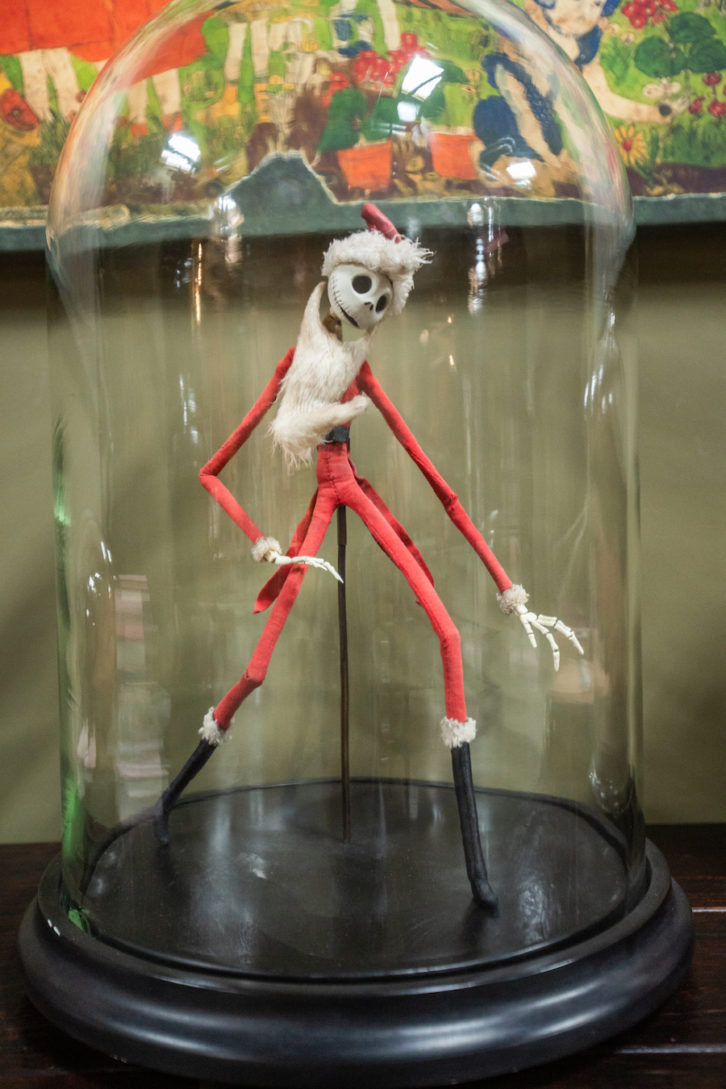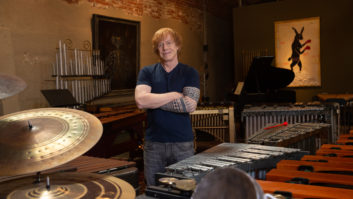
Mix sat down with film composer/recording artist Danny Elfman to discuss his new album, Big Mess, and much more. In Part 3, he discusses his long-running creative relationship with director Tim Burton. Don’t miss Parts 1 and 2.
What is it that works so well about your creative relationship with Tim Burton?
It was such a lucky break to start out with Tim because our sensibilities were close from the beginning. The first time we met, I learned that his idol was Vincent Price and he learned that mine was Peter Lorre. We were both weird kids who grew up on horror. We have in common a love of outsiders and miscreants. He’s got an odd sensibility, but my instincts meet them naturally, and he gave me such wonderfully open soundscapes to work in.
Whether it was Beetlejuice, Pee Wee’s Big Adventure, Batman, Edward Scissorhands, The Nightmare Before Christmas, there was nothing to go on in terms of what they were supposed to sound like—virtually nothing. I didn’t realize at the time what a luxury that was.
Batman is an interesting example of that because it was so much darker than other superhero movies.
At that time, the example we had of a modern superhero was Superman, but we knew we didn’t want it to sound like Superman. I love John Williams’ score; it just was not where we were going. But other than that, we had no idea where we should be going. It was the same with Edward Scissorhands and Beetlejuice—not a clue what to use as a model because there was no model.

When I did Nightmare Before Christmas, all we knew was that we didn’t want to sound like a Broadway musical or a Disney musical. There was just nothing as far as an example, and that “nothing” is the best thing that could happen to a composer starting out. It was perfect for me to start out with very odd and unusual movies that had no template for what they were supposed to sound like.
Can you share any details about the way you used music to create the world of Edward Scissorhands? It’s magical.
As I started writing themes for Edward, I was frustrated that there were two themes that kept happening. I was thinking I could only use one of them, or maybe one for Edward and one for Kim. But after a certain point, I abandoned that completely. I realized, there’s two themes here, but they’re both Edward’s themes. There really isn’t a love theme.
I was concerned for a while. I wasn’t sure it made any sense that I was taking this odd approach—a dual thematic score based around a single character. I wondered if I was possibly f—king up Edward Scissorhands, but it felt right. And fortunately for me, Tim always goes with the visceral. He just says, “I like the way it feels. It’s good.” That’s it.

How is your musical approach to something fantastical like Edward Scissorhands different from scoring more of a straight drama like [Gus Van Sant’s] Milk?
It isn’t very different. No matter what the film, I try to absorb it and also to get inside the director’s head. You need to try to feel the director’s perspective. In a film like Milk, I was trying to think through Gus Van Sant’s mind and personality, which made me play a bit of jazz, and play things looser and improvise more, because that’s the way Gus thinks, as opposed to Tim where I’m working with an odd, broken, fairy tale narrative.







